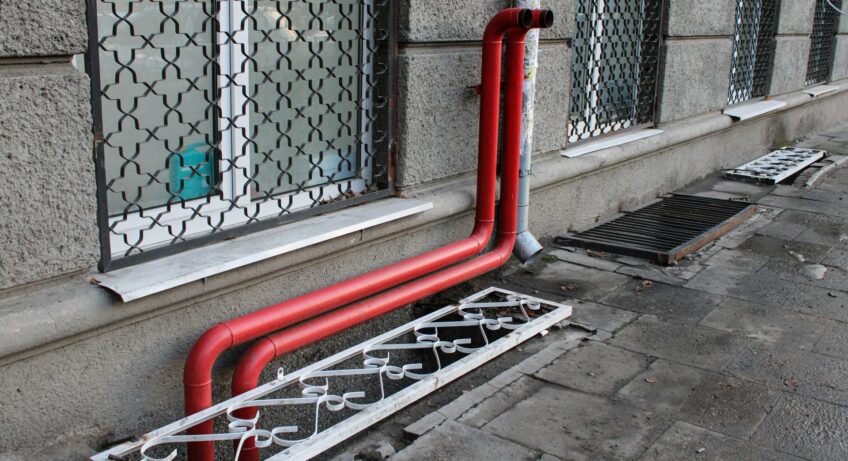Think your old pipes need to be completely dug up and replaced? Not always. Pipe relining offers a smarter, cleaner and far less disruptive alternative. It’s a modern method that repairs your existing pipes from the inside, restoring them to near-new condition without ripping up your floors, garden, or driveway.
But what exactly is pipe relining, and how do you know if it’s the right solution for your home? Let’s take a clear look at how it works, the pros and cons, and what makes a property a good fit for it.
What Is Pipe Relining?
Pipe relining Port Macquarie is a no-dig solution to fix damaged or deteriorating pipes. Instead of removing the old pipes, a new lining is inserted into them. This lining is then hardened in place, effectively creating a new pipe within the old one.
It’s commonly used for:
- Cracked or broken pipes caused by ground movement or tree roots
- Pipes suffering from corrosion or age-related wear
- Leaks in hard-to-access areas, like under a concrete slab or garden bed
The process involves several key steps:
- Inspection – A small camera is used to inspect the inside of the pipes and identify the damage.
- Cleaning – High-pressure water is used to clear debris, tree roots, and any blockages.
- Inserting the Liner – A flexible, resin-soaked liner is pushed or pulled into the pipe.
- Curing – The resin is cured with hot water, steam, or UV light so it hardens in place.
- Final Check – Another camera inspection ensures everything is sealed and functioning.
The Advantages of Pipe Relining
The popularity of pipe relining has grown for good reason. It solves major plumbing issues without causing a major mess.
Here’s what makes it appealing:
- Minimal disruption – No need to dig trenches, tear up tiles or remove concrete
- Faster turnaround – Most jobs can be completed in a day or two
- Long-lasting – The new liner is highly durable, often rated to last over 50 years
- Root-resistant – The new pipe interior is seamless, making it harder for roots to break in
- Cost-effective – While not always cheaper upfront, the reduced labour and restoration costs make it a strong value option
- Environmentally friendly – Less excavation means less waste and minimal impact on the surrounding property
When Is Pipe Relining a Good Option?
Pipe relining isn’t the right solution for every plumbing problem. Its success depends on the condition of the existing pipes and where the damage is located.
It’s generally a good fit if:
- The pipes are structurally stable enough to support the liner
- The damage is limited to cracks, holes or minor collapses, not total destruction
- The access points are available to insert the liner
- The issue is in a hard-to-reach area where digging would be expensive or invasive
It may not be suitable if the original pipe has completely collapsed or is too narrow to accommodate the liner. In some cases, full replacement is still the better choice.
What Types of Pipes Can Be Relined?
Most commonly, relining is used on clay pipes, cast iron pipes, PVC pipes, and concrete pipes. It works for both residential and commercial properties, and for various pipe sizes. If your home was built several decades ago and still has older pipe materials, relining can be an ideal upgrade without the hassle of major demolition.
Signs Your Pipes Might Need Relining
Wondering if your home’s pipes are a candidate for relining? There are a few warning signs that could indicate internal damage:
- Frequent blockages – Recurring clogs that keep coming back
- Slow drainage – Water draining slowly despite cleaning or plunging
- Foul smells – Persistent odours coming from drains or the garden
- Visible sinkholes – Soft spots or sudden dips in the yard
- Water damage – Signs of leaks or mould indoors
These symptoms don’t guarantee you need relining, but they do mean it’s worth getting an inspection. A plumber can do a camera check and assess the pipe’s internal condition.
Comparing Relining vs Traditional Pipe Replacement
There are two main ways to fix a broken pipe: dig it up and replace it, or reline it. Here’s how they stack up:
Pipe Relining
- No excavation required
- Faster and less labour-intensive
- Minimal property damage
- Lower reinstatement costs
- Best for accessible, stable pipes with cracks or leaks
Pipe Replacement
- Necessary if pipes are collapsed, disjointed or beyond repair
- May offer more flexibility for re-routing pipes
- Higher initial cost and longer time frame
- Greater disruption to home and outdoor areas
Ultimately, the best option depends on the severity of the damage, your budget, and how much disruption you’re willing to tolerate.
Why Homeowners Are Choosing Pipe Relining More Often
Homeowners are increasingly turning to relining as a modern, clean, and non-invasive way to deal with old plumbing systems. With so many properties still running on decades-old pipes, relining offers a way to upgrade without ripping everything out.
It brings together speed, convenience, long-term reliability, and reduced mess and noise. This is especially appealing for those living in busy households, strata buildings, or heritage homes where preserving the original structure matters.
A Smarter Fix for Hidden Problems
Pipe relining solves problems you can’t see, without creating new ones you can. It restores your plumbing system from the inside, reduces the need for excavation, and extends the life of your pipes for decades.
If you’ve noticed signs of pipe trouble or your home still has its original plumbing, it’s worth looking into. While not every situation is a perfect fit for relining, it’s a powerful solution for many modern households wanting a cleaner, quicker, and more cost-effective repair.

